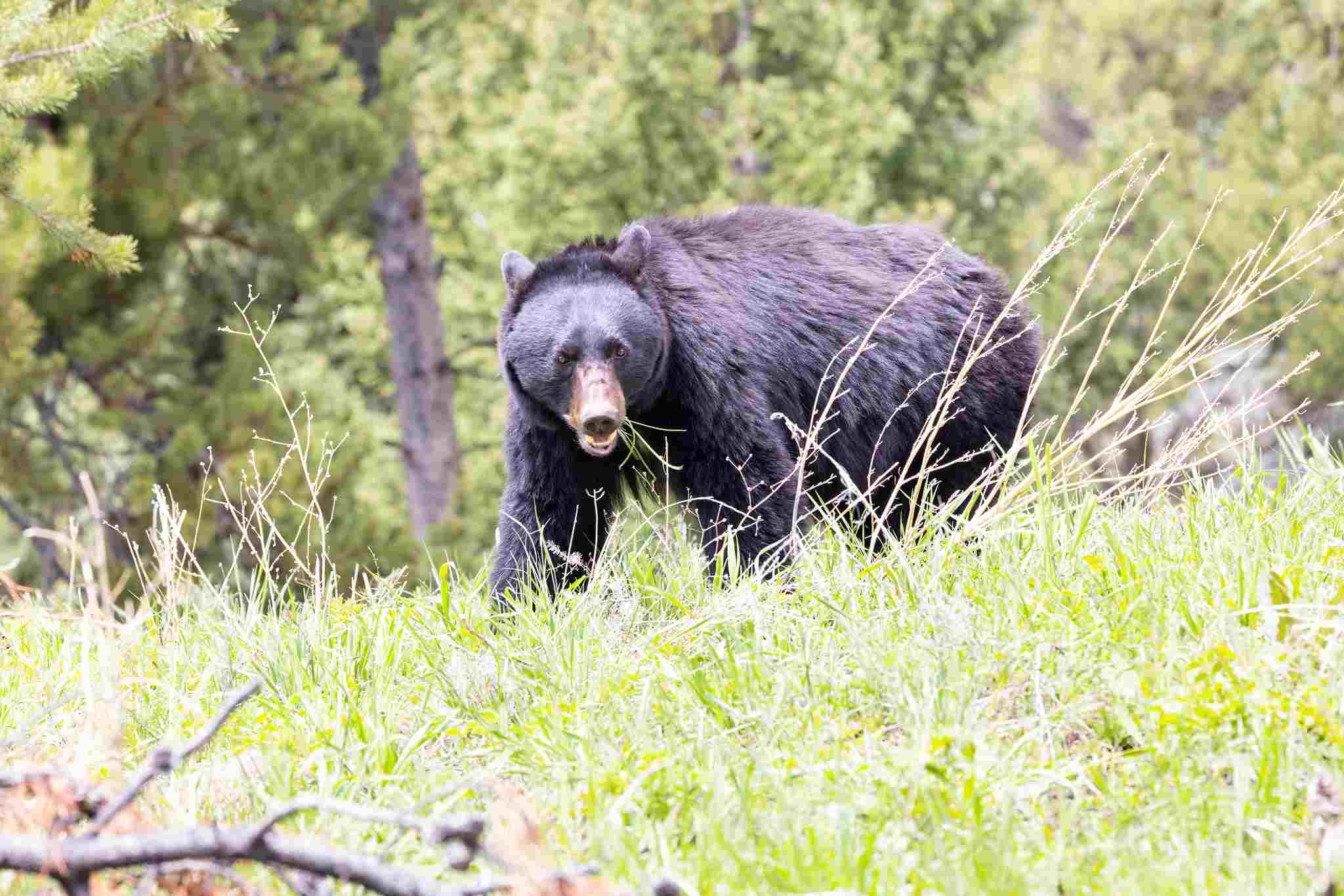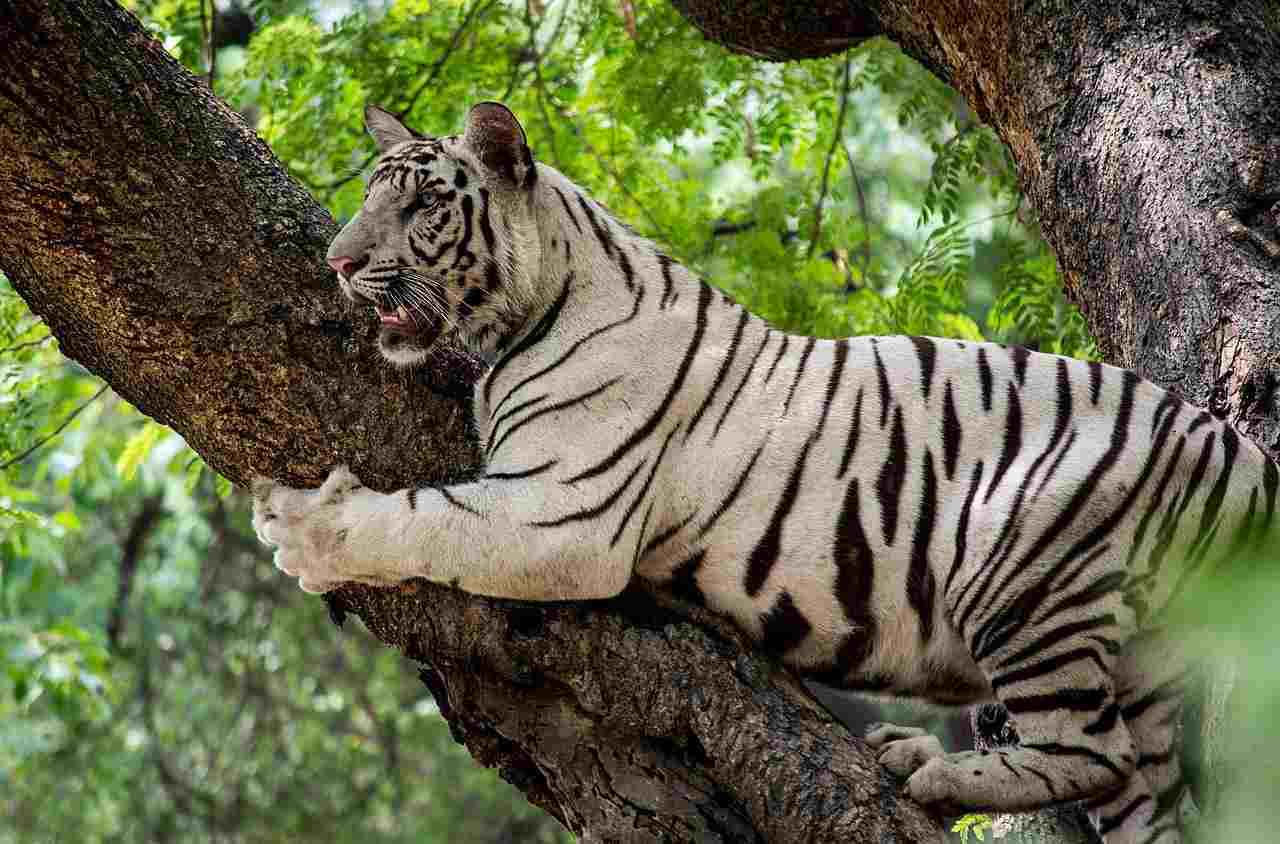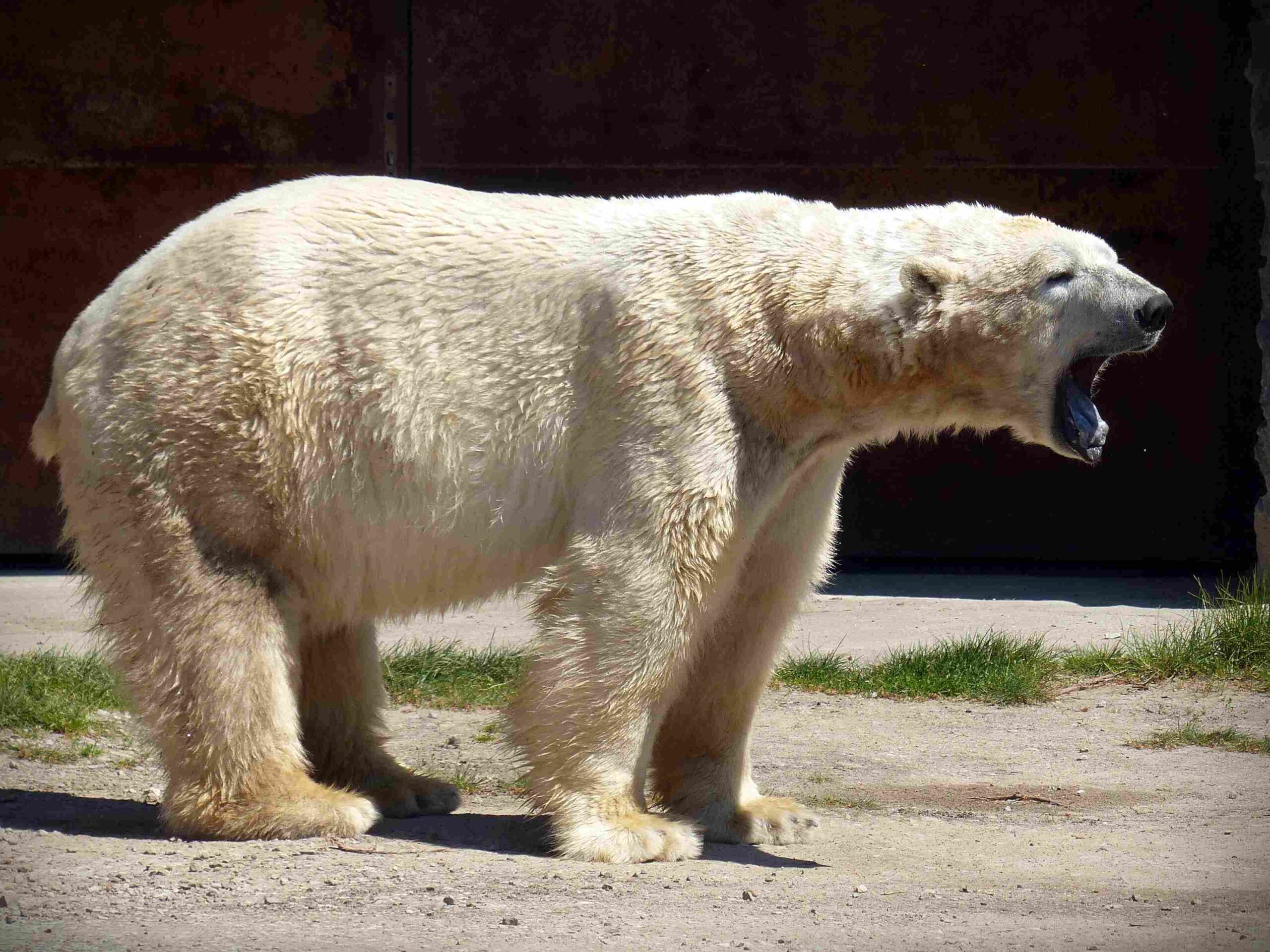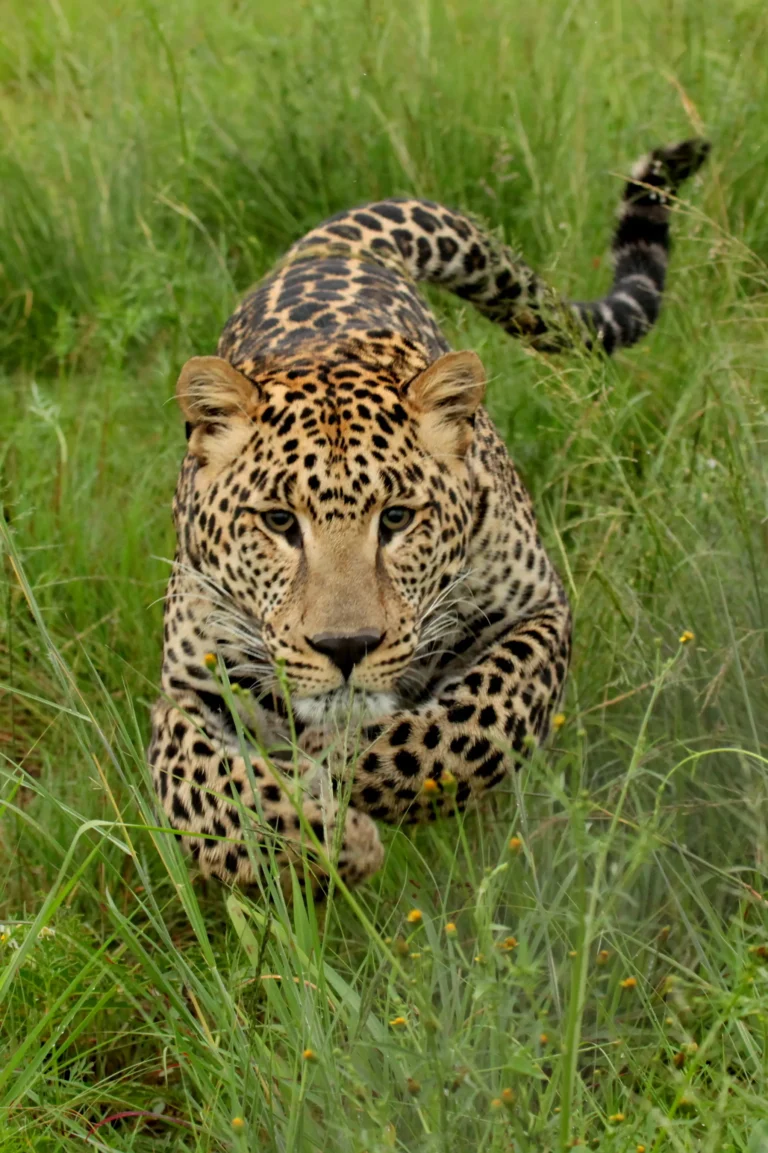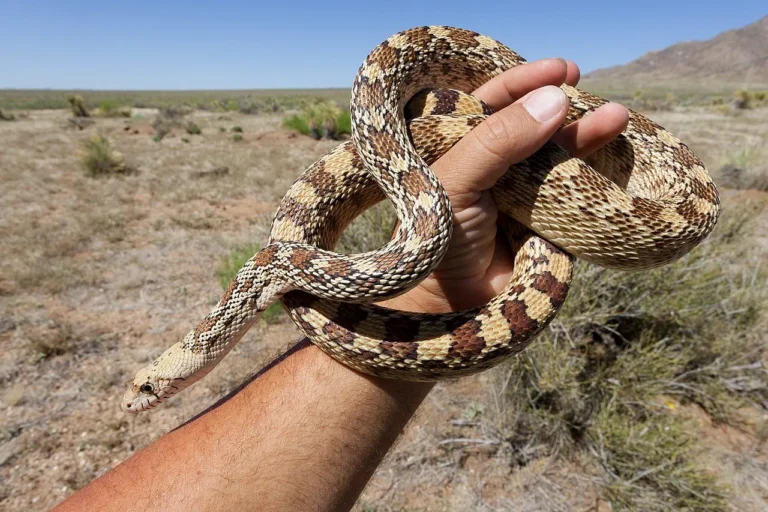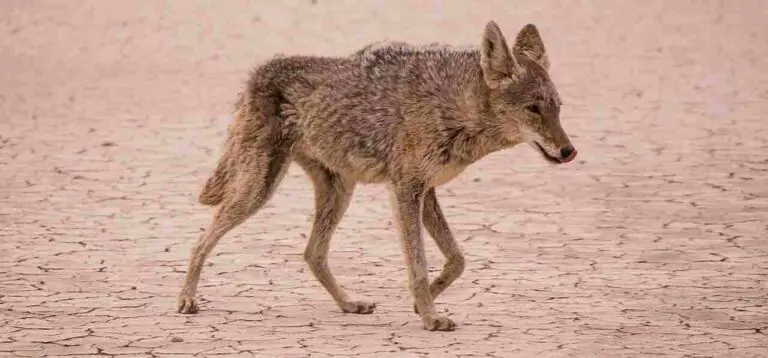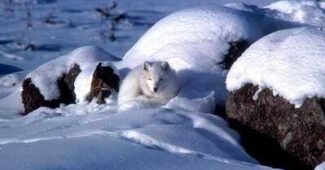7+ Quaternary Consumers in the Forest Ecosystem and Their Characteristics
Quaternary consumers in the forest ecosystem are the top predators that occupy the highest trophic level, playing a crucial role in regulating prey populations and maintaining ecological balance. Examples include the grizzly bear, tiger, jaguar, anaconda, harpy eagle, Nile crocodile, Congo dwarf crocodile, and African crowned eagle. These apex predators exert significant influence on their ecosystems by controlling herbivore populations and shaping the dynamics of forest food webs through their hunting behaviors and ecological interactions.
1. Grizzly Bear: The Apex Predator of North American Forests
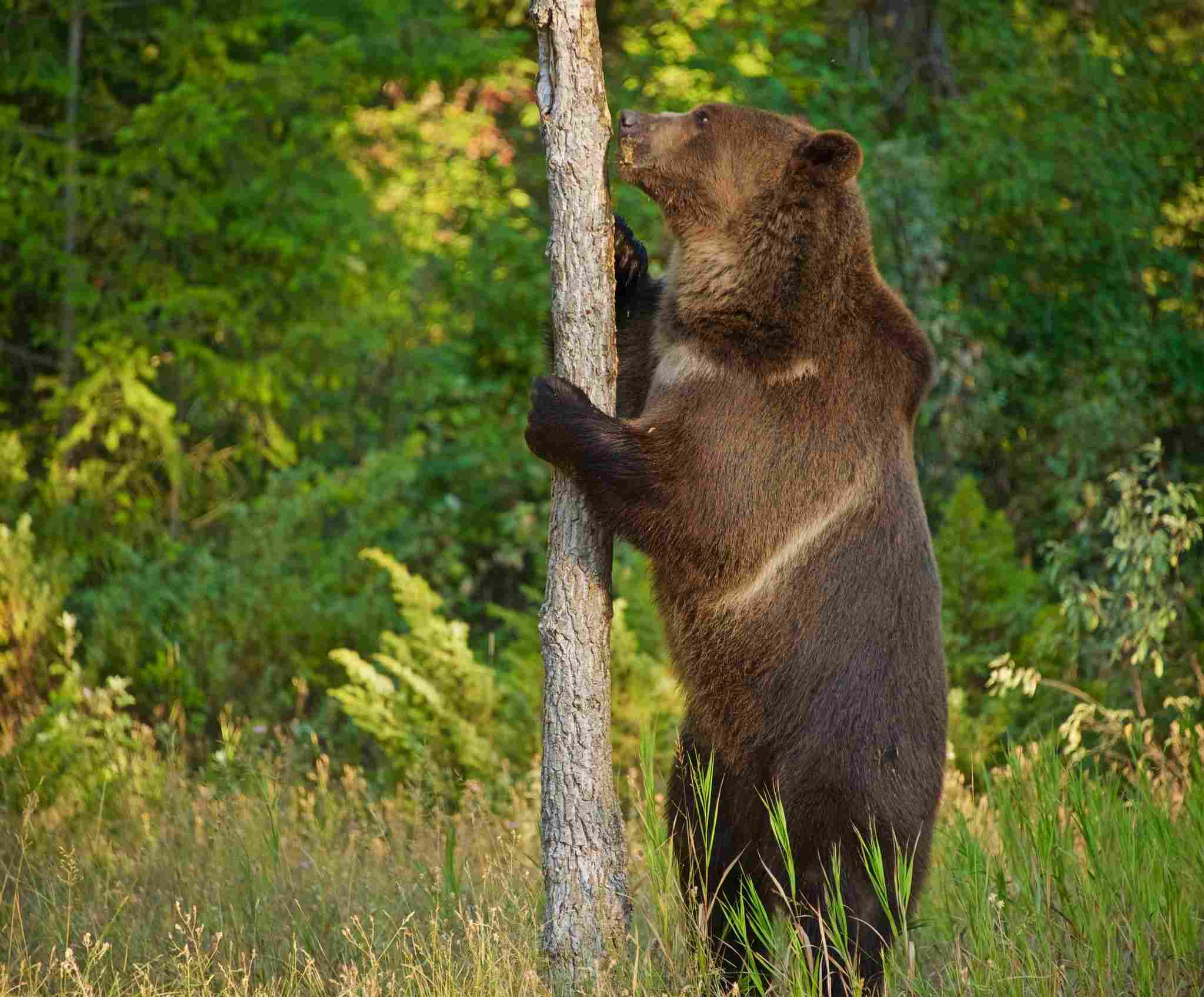
Grizzly bears (Ursus arctos horribilis) are iconic symbols of the wilderness, known for their imposing size, strength, and role as top predators in the ecosystems they inhabit. As quaternary consumers in forest ecosystems, grizzly bears play a crucial role in regulating prey populations and shaping the overall ecological balance.
Physical Characteristics: Grizzly bears are characterized by their distinctive humped shoulders, long claws, and grizzled fur, which can range in color from blonde to dark brown. Adult males typically weigh between 300 to 700 kilograms (660 to 1,500 pounds), while females are slightly smaller, weighing between 150 to 400 kilograms (330 to 880 pounds).
Habitat and Range: Grizzly bears are primarily found in North America, inhabiting a variety of forested habitats including temperate rainforests, coniferous forests, and subalpine meadows. They have a broad range that extends from Alaska and Canada down through the Rocky Mountains into the western United States.
Ecological Role: As apex predators, grizzly bears have a significant impact on their ecosystems. They primarily feed on vegetation such as grasses, roots, berries, and nuts, but they are also opportunistic hunters, preying on a variety of animals including fish, small mammals, and occasionally larger prey such as elk and moose. By regulating herbivore populations, grizzly bears indirectly influence vegetation dynamics and promote biodiversity within forest ecosystems.
Behavior and Reproduction: Grizzly bears are solitary animals for much of the year, although they may congregate in large numbers at concentrated food sources such as salmon spawning grounds. They have a complex social structure, with overlapping home ranges and communication through vocalizations, body language, and scent marking. Mating typically occurs in late spring to early summer, with females giving birth to one to three cubs in the den during the winter months.
Conservation Status: Grizzly bears face numerous threats to their survival, including habitat loss, human-wildlife conflict, and climate change. They are listed as a species of “Least Concern” globally by the International Union for Conservation of Nature (IUCN), but several subpopulations, particularly those in the lower 48 states of the United States, are considered threatened or endangered.
Conclusion: As one of the largest terrestrial predators in North America, the grizzly bear plays a vital role as a quaternary consumer in forest ecosystems. Its presence helps maintain the balance of nature by regulating prey populations and shaping the dynamics of the ecosystems it inhabits. Protecting and conserving grizzly bear populations is essential not only for their own survival but also for the health and integrity of forest ecosystems.
2. Tiger: Apex Predator of Asian Forests
Physical Characteristics: Tigers (Panthera tigris) are the largest of all the big cats, characterized by their distinctive orange fur with black stripes. They have muscular bodies, powerful jaws, and retractable claws. Adult males can weigh between 100 to 300 kilograms (220 to 660 pounds), with females being slightly smaller.
Habitat and Range: Tigers are found primarily in forests across Asia, including tropical and subtropical forests, mangrove swamps, grasslands, and savannas. They have a wide distribution that spans countries such as India, Nepal, Bhutan, Bangladesh, Malaysia, Indonesia, and Russia.
Ecological Role: As apex predators, tigers play a crucial role in maintaining the health and balance of forest ecosystems. They are top carnivores, preying on a variety of animals including deer, wild boar, and other ungulates. By regulating herbivore populations, tigers help prevent overgrazing and maintain the structure and diversity of plant communities.
Behavior and Reproduction: Tigers are solitary animals, with males having large home ranges that overlap with the territories of several females. They are primarily nocturnal hunters, using their keen senses of sight, smell, and hearing to locate and ambush prey. Mating can occur throughout the year, with females giving birth to a litter of two to four cubs after a gestation period of approximately three and a half months.
Conservation Status: Tigers are listed as endangered by the IUCN, with populations declining due to habitat loss, poaching, human-wildlife conflict, and depletion of prey species. Conservation efforts, including protected areas, anti-poaching measures, and habitat restoration, are crucial for ensuring the survival of tigers in the wild.
3. Jaguar: The Elusive Forest Predator of the Americas
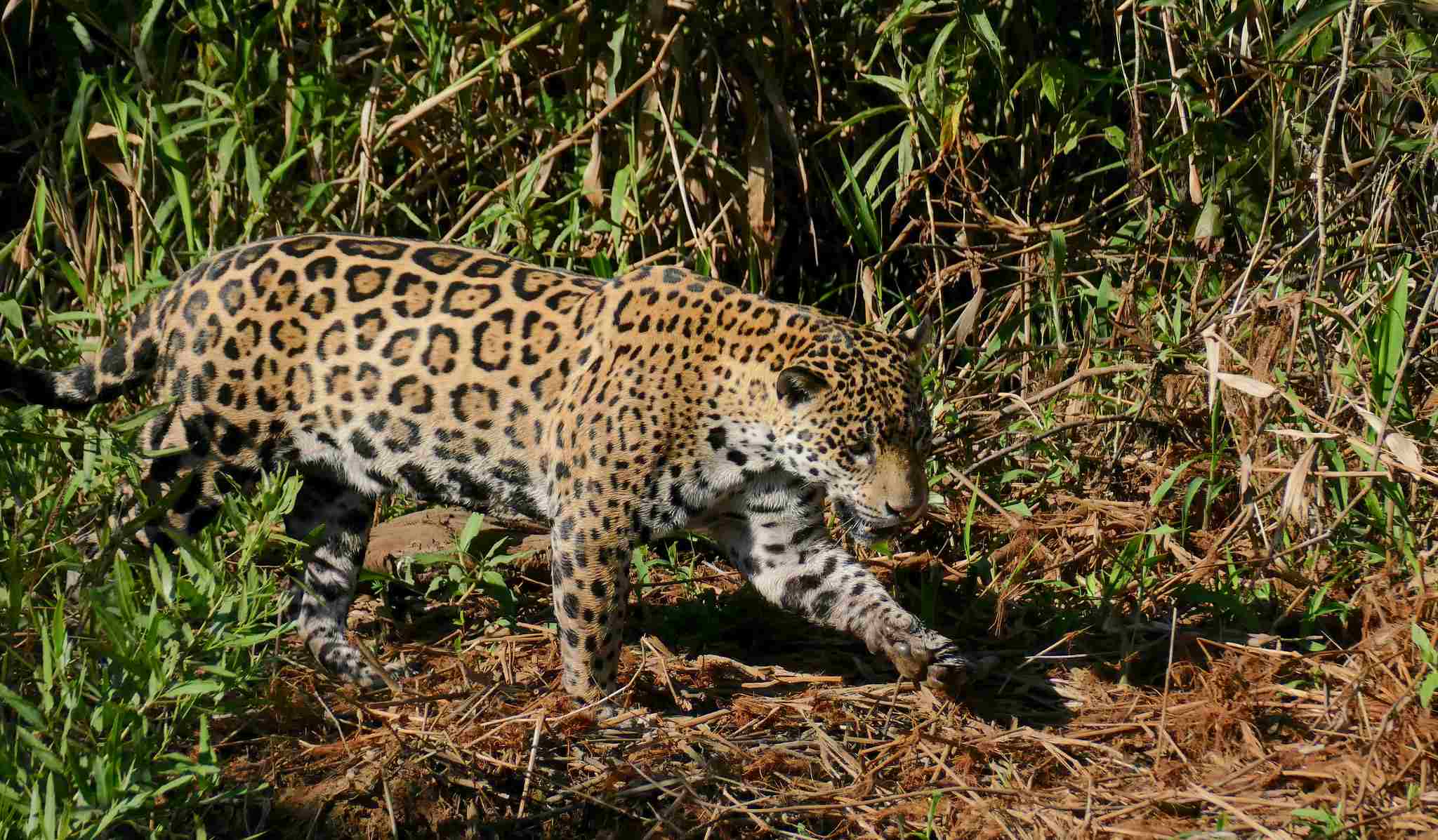
Physical Characteristics: Jaguars (Panthera onca) are the largest big cat species in the Americas, known for their muscular build, short legs, and distinctive rosette-shaped markings on their fur. They have a powerful bite, capable of piercing through the skulls of their prey. Adult males can weigh between 60 to 100 kilograms (130 to 220 pounds), with females being slightly smaller.
Habitat and Range: Jaguars inhabit a variety of forested habitats across Central and South America, including rainforests, swamps, and savannas. They have a broad range that extends from Mexico through Central America to northern Argentina.
Ecological Role: As apex predators, jaguars play a crucial role in regulating prey populations and shaping the structure of forest ecosystems. They are opportunistic hunters, preying on a variety of animals including deer, peccaries, and capybaras. Jaguars are known for their stealthy hunting tactics, often ambushing their prey from trees or dense vegetation.
Behavior and Reproduction: Jaguars are solitary animals, with males having large home ranges that overlap with the territories of several females. They are primarily nocturnal hunters, although they may also be active during the day. Mating can occur throughout the year, with females giving birth to a litter of one to four cubs after a gestation period of approximately three and a half months.
Conservation Status: Jaguars are listed as near-threatened by the IUCN, with populations declining due to habitat loss, poaching, and human-wildlife conflict. Conservation efforts, including protected areas, anti-poaching measures, and habitat connectivity initiatives, are essential for ensuring the long-term survival of jaguars in the wild.
4. Anaconda: The Giant Serpent of South American Jungles
Physical Characteristics: Anacondas are large, non-venomous snakes belonging to the boa family. The green anaconda (Eunectes murinus) is the largest snake species by weight, with adult females reaching lengths of up to 6 to 7 meters (20 to 23 feet) and weighing over 200 kilograms (440 pounds). They have muscular bodies, olive-green coloration, and distinctive black spots along their sides.
Habitat and Range: Anacondas are primarily found in the tropical rainforests and swamps of South America, including the Amazon Basin and the Orinoco River basin. They are highly adapted to aquatic habitats, often inhabiting slow-moving rivers, streams, and flooded forests.
Ecological Role: As apex predators, anacondas play a crucial role in regulating prey populations and shaping the dynamics of aquatic ecosystems. They are opportunistic hunters, preying on a variety of animals including fish, birds, mammals, and reptiles. Anacondas are ambush predators, relying on stealth and brute strength to capture and constrict their prey.
Behavior and Reproduction: Anacondas are solitary animals, with males having larger home ranges than females. They are primarily nocturnal hunters, although they may also be active during the day. Mating typically occurs during the dry season, with females giving birth to live young after a gestation period of approximately six to seven months. Female anacondas are ovoviviparous, giving birth to litters of 20 to 40 neonates.
Conservation Status: Anacondas are not currently listed as a threatened species by the IUCN, although they face threats from habitat loss, poaching for their skin, and human-wildlife conflict. Conservation efforts, including protected areas and sustainable management practices, are essential for ensuring the long-term survival of anaconda populations in their natural habitats.
5. Harpy Eagle: Apex Predator of the South American Rainforest
Physical Characteristics: The harpy eagle (Harpia harpyja) is one of the largest and most powerful eagles in the world, characterized by its robust build, dark feathers, and distinctive double crest of feathers on its head. It has a wingspan of up to 2 meters (6.5 feet) and can weigh between 4 to 9 kilograms (9 to 20 pounds). Harpy eagles have sharp talons and a hooked beak, which they use to capture and kill prey.
Habitat and Range: Harpy eagles inhabit the tropical rainforests of Central and South America, including the Amazon Basin. They prefer tall, mature forests with dense canopy cover, where they can hunt for arboreal prey species.
Ecological Role: As apex predators, harpy eagles play a crucial role in regulating prey populations and shaping the dynamics of forest ecosystems. They are top carnivores, preying on a variety of animals including monkeys, sloths, and other birds. Harpy eagles are highly specialized hunters, using their keen eyesight and powerful talons to capture and kill prey in the forest canopy.
Behavior and Reproduction: Harpy eagles are solitary birds, with males and females forming monogamous pairs during the breeding season. They build large nests high up in the canopy, where they raise a single chick every two to three years. Mating and nesting typically occur during the dry season, with females laying one or two eggs.
Conservation Status: Harpy eagles are listed as near-threatened by the IUCN, with populations declining due to habitat loss, poaching, and human-wildlife conflict. Conservation efforts, including protected areas and habitat restoration initiatives, are essential for ensuring the long-term survival of harpy eagle populations in their natural habitats.
6. Nile Crocodile: Master Predator of African Rivers and Wetlands
Physical Characteristics: The Nile crocodile (Crocodylus niloticus) is a large, powerful reptile with a streamlined body, armored scales, and a long, muscular tail. It has a dark olive-green coloration with lighter underparts. Adult Nile crocodiles can reach lengths of up to 5 meters (16 feet) and weigh over 500 kilograms (1,100 pounds).
Habitat and Range: Nile crocodiles inhabit freshwater habitats throughout sub-Saharan Africa, including rivers, lakes, swamps, and marshes. They are highly adaptable and can thrive in both permanent water bodies and seasonal wetlands.
Ecological Role: As apex predators, Nile crocodiles play a crucial role in regulating prey populations and shaping the dynamics of aquatic ecosystems. They are opportunistic hunters, preying on a variety of animals including fish, amphibians, birds, and mammals. Nile crocodiles are ambush predators, using stealth and patience to capture and kill their prey.
Behavior and Reproduction: Nile crocodiles are solitary animals, with males having larger territories than females. They are primarily nocturnal hunters, although they may also be active during the day. Mating typically occurs during the dry season, with females laying eggs in nest mounds constructed along the banks of rivers or lakes.
Conservation Status: Nile crocodiles are listed as a species of least concern by the IUCN, with stable populations across much of their range. However, they face threats from habitat loss, pollution, and human-wildlife conflict in some areas. Conservation efforts, including protected areas and sustainable management practices, are crucial for ensuring the long-term survival of Nile crocodile populations.
7. Congo Dwarf Crocodile: Hidden Predator of Central African Forests
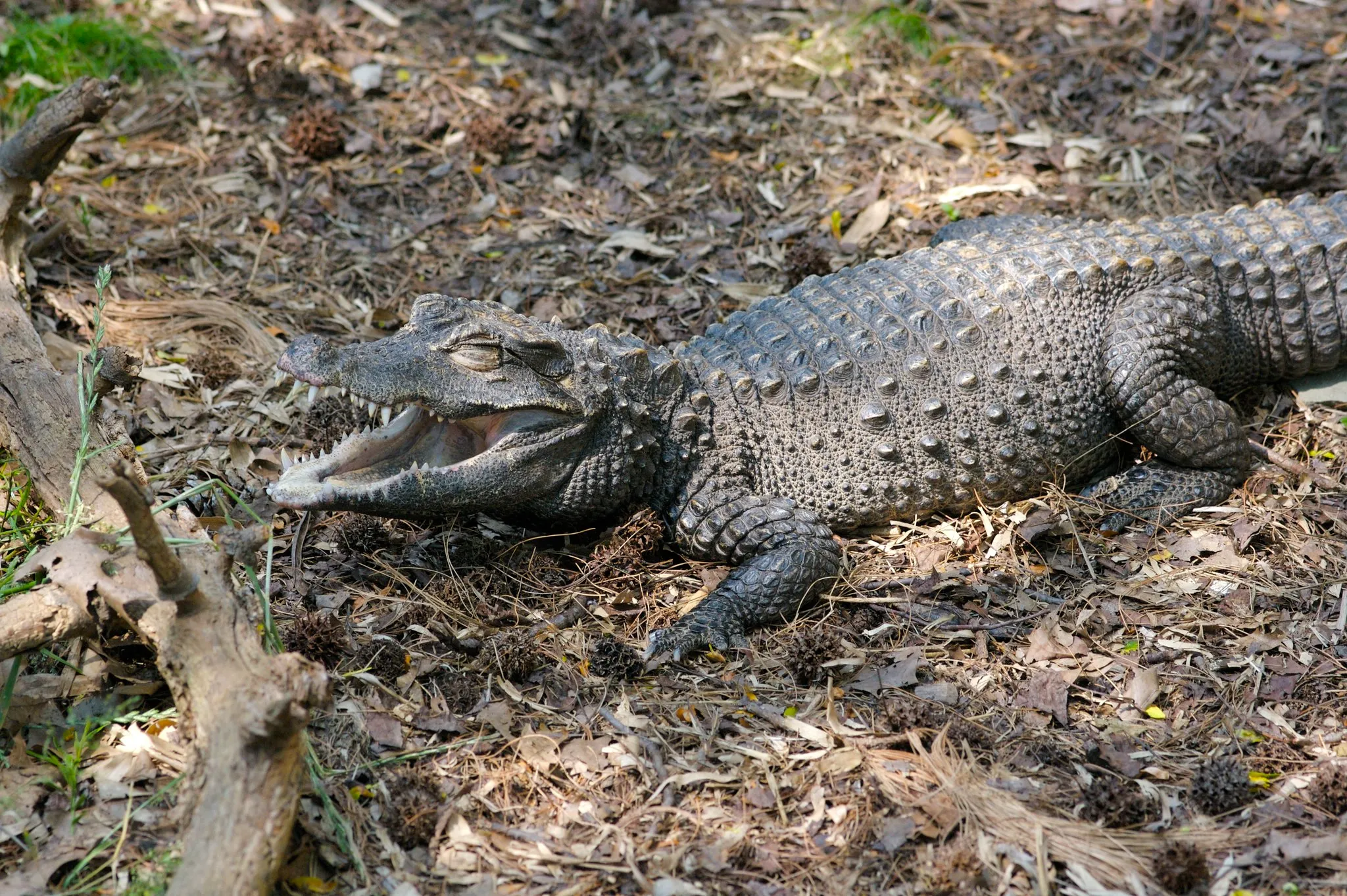
Physical Characteristics: The Congo dwarf crocodile (Osteolaemus tetraspis) is a small crocodilian species with a slender body, rough scales, and a broad snout. It has a dark brown coloration with black bands or spots along its back. Adult Congo dwarf crocodiles typically reach lengths of up to 1.5 meters (5 feet) and weigh around 18 kilograms (40 pounds).
Habitat and Range: Congo dwarf crocodiles inhabit the forests and freshwater habitats of Central and West Africa, including rainforests, swamps, and rivers. They are primarily found in dense, shaded habitats with ample vegetation cover.
Ecological Role: As apex predators, Congo dwarf crocodiles play a crucial role in regulating prey populations and shaping the dynamics of forest ecosystems. They are opportunistic hunters, preying on a variety of animals including fish, amphibians, birds, and small mammals. Congo dwarf crocodiles are ambush predators, using stealth and camouflage to capture and kill their prey.
Behavior and Reproduction: Congo dwarf crocodiles are solitary animals, with males having larger territories than females. They are primarily nocturnal hunters, although they may also be active during the day. Mating typically occurs during the wet season, with females laying eggs in nest mounds constructed along the banks of rivers or streams.
Conservation Status: Congo dwarf crocodiles are listed as least concern by the IUCN, with stable populations across much of their range. However, they face threats from habitat loss, deforestation, and human-wildlife conflict in some areas. Conservation efforts, including protected areas and habitat restoration initiatives, are essential for ensuring the long-term survival of Congo dwarf crocodile populations.
8. African Crowned Eagle: Forest Raptor of Sub-Saharan Africa
Physical Characteristics: The African crowned eagle (Stephanoaetus coronatus) is a large bird of prey with a powerful build, broad wings, and a distinctive crest of feathers on its head. It has a dark brown coloration with lighter underparts and a barred tail. Adult African crowned eagles can reach lengths of up to 90 centimeters (3 feet) and have a wingspan of over 2 meters (6.5 feet).
Habitat and Range: African crowned eagles inhabit the forests and woodlands of sub-Saharan Africa, including rainforests, montane forests, and savannas. They are primarily found in areas with tall trees and abundant prey species.
Ecological Role: As apex predators, African crowned eagles play a crucial role in regulating prey populations and shaping the dynamics of forest ecosystems. They are top carnivores, preying on a variety of animals including monkeys, small antelope, and other birds. African crowned eagles are highly skilled hunters, using their keen eyesight and powerful talons to capture and kill prey in the forest canopy.
Behavior and Reproduction: African crowned eagles are solitary birds, with males and females forming monogamous pairs during the breeding season. They build large nests high up in the canopy, where they raise a single chick every year. Mating and nesting typically occur during the dry season, with females laying one or two eggs.
Conservation Status: African crowned eagles are listed as least concern by the IUCN, with stable populations across much of their range. However, they face threats from habitat loss, deforestation, and human-wildlife conflict in some areas. Conservation
*Summary
-
Grizzly Bear:
-
Physical Characteristics: Large size, humped shoulders, grizzled fur.
-
Habitat and Range: North American forests, including temperate rainforests and subalpine meadows.
-
Ecological Role: Apex predator, feeds on vegetation and prey animals, regulates herbivore populations.
-
Behavior and Reproduction: Solitary except during mating season, give birth to cubs in dens during winter.
-
Conservation Status: Faces threats from habitat loss and human-wildlife conflict, listed as threatened or endangered in some regions.
-
-
Tiger:
-
Physical Characteristics: Largest of all big cats, orange fur with black stripes.
-
Habitat and Range: Asian forests, including tropical and subtropical forests, grasslands, and savannas.
-
Ecological Role: Apex predator, regulates prey populations, primarily nocturnal hunters.
-
Behavior and Reproduction: Solitary except during mating season, give birth to cubs after a gestation period of approximately three and a half months.
-
Conservation Status: Endangered due to habitat loss, poaching, and human-wildlife conflict.
-
-
Jaguar:
-
Physical Characteristics: Largest big cat in the Americas, rosette-shaped markings on fur.
-
Habitat and Range: Central and South American forests, rainforests, swamps, and savannas.
-
Ecological Role: Apex predator, regulates prey populations, opportunistic hunters.
-
Behavior and Reproduction: Solitary except during mating season, give birth to cubs after a gestation period of approximately three and a half months.
-
Conservation Status: Near-threatened due to habitat loss, poaching, and human-wildlife conflict.
-
-
Anaconda:
-
Physical Characteristics: Largest snake species by weight, olive-green coloration with black spots.
-
Habitat and Range: South American jungles, including tropical rainforests and swamps.
-
Ecological Role: Apex predator, regulates prey populations, ambush hunters.
-
Behavior and Reproduction: Solitary, give birth to live young after a gestation period of approximately six to seven months.
-
Conservation Status: Faces threats from habitat loss and human activities, not currently listed as threatened by the IUCN.
-
-
Harpy Eagle:
-
Physical Characteristics: Large and powerful eagle, double crest of feathers on head.
-
Habitat and Range: South American rainforests, tall mature forests with dense canopy cover.
-
Ecological Role: Apex predator, regulates prey populations, arboreal hunters.
-
Behavior and Reproduction: Solitary except during breeding season, raise single chick every two to three years.
-
Conservation Status: Near-threatened due to habitat loss, poaching, and human-wildlife conflict.
-
-
Nile Crocodile:
-
Physical Characteristics: Large and powerful crocodile, streamlined body, armored scales.
-
Habitat and Range: Sub-Saharan African rivers, lakes, swamps, and marshes.
-
Ecological Role: Apex predator, regulates prey populations, ambush hunters.
-
Behavior and Reproduction: Solitary, mate during dry season, lay eggs in nest mounds along water bodies.
-
Conservation Status: Least concern, but faces threats from habitat loss and human activities in some regions.
-
-
Congo Dwarf Crocodile:
-
Physical Characteristics: Small crocodile species, slender body, dark brown coloration with black bands.
-
Habitat and Range: Central and West African forests, rainforests, swamps, and rivers.
-
Ecological Role: Apex predator, regulates prey populations, ambush hunters.
-
Behavior and Reproduction: Solitary, mate during wet season, lay eggs in nest mounds along water bodies.
-
Conservation Status: Least concern, but faces threats from habitat loss and human activities in some regions.
-
-
African Crowned Eagle:
-
Physical Characteristics: Large forest raptor, powerful build, distinctive crest of feathers on head.
-
Habitat and Range: Sub-Saharan African forests and woodlands, tall trees with abundant prey species.
-
Ecological Role: Apex predator, regulates prey populations, skilled hunters in forest canopy.
-
Behavior and Reproduction: Solitary except during breeding season, raise single chick every year.
-
Conservation Status: Least concern, but faces threats from habitat loss and human activities in some regions.
-
| Forest Quaternary Consumers | Characteristics |
| Grizzly Bear |
Large size, humped shoulders, grizzled fur.
|
| Tiger |
Largest of all big cats, orange fur with stripes.
|
| Jaguar |
Largest big cat in Americas, rosette-shaped fur.
|
| Anaconda |
Largest snake by weight, olive-green with spots.
|
| Harpy Eagle |
Large and powerful eagle, double crest on head.
|
| Nile Crocodile |
Large and powerful crocodile, streamlined body.
|
| Congo Dwarf Crocodile |
Small crocodile, dark brown with bands.
|
| African Crowned Eagle |
Large forest raptor, distinctive crest.
|

